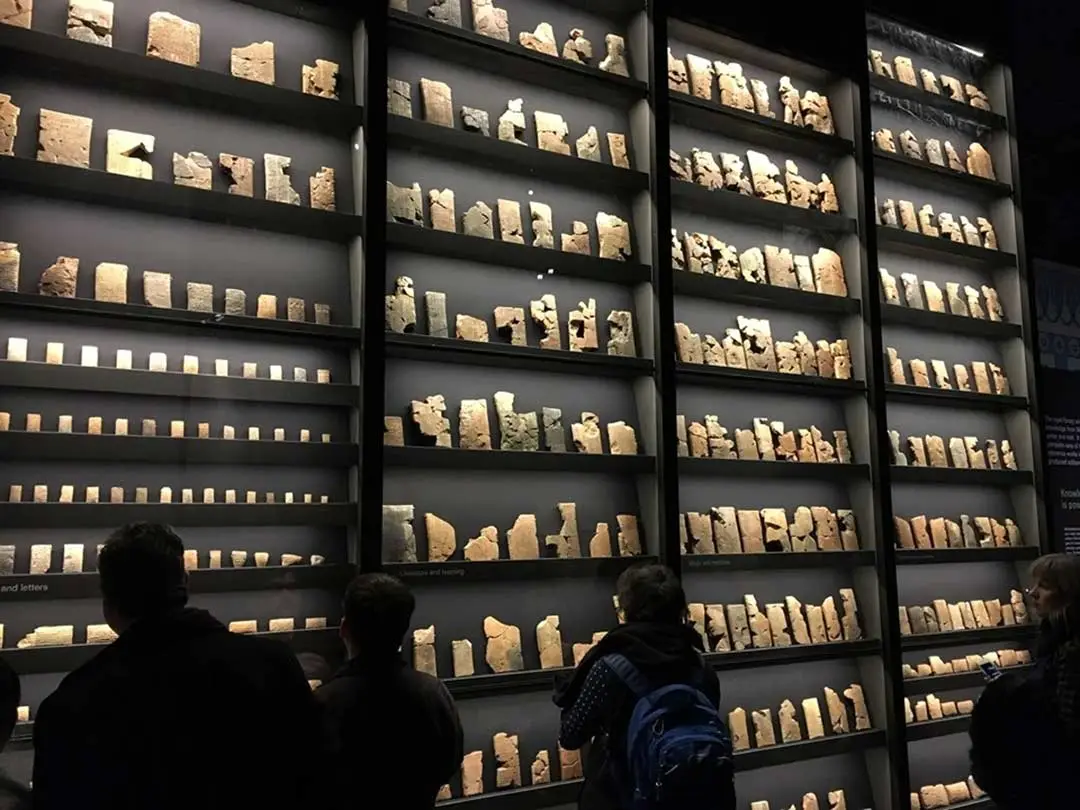The very earliest libraries are believed to have been built around five thousand years ago in old iraq, with the first human efforts to organize collections of documents. the Nippur Library Sumerian Library in Southern Iraq and others These took the form of clay tablets in cuneiform script about an inch thick, in various shapes and sizes.
Mud-like clay was placed in the wooden frames, and the surface was smoothed for writing and allowed to dry until damp. After being inscribed, the clay dried in the sun, or for a harder finish, was baked in a kiln.
According to research, the word “library” originated in Latin, from the word Libraria, meaning “place storing books” and the Latin liber, meaning “book,” whereas a Latinized Greek word, bibliotheca, is the origin of the word for library in German, Russian, and the Romance languages.
The First Libraries
It is believed that the first libraries appeared five thousand years ago from Mesopotamia The world’s oldest known library is believed to be Nippur Library and others The Library of Ashurbanipal. which was founded sometime in the 3000BCE Sumerian Library in Southern Iraq to 7th century B.C. for the “royal contemplation” of the Assyrian ruler Ashurbanipal. Located in Nineveh in modern day Iraq, the site included a trove of some 30,000 cuneiform tablets organized according to subject matter. The library, named after Ashurbanipal, in fact the last great king of the Assyrian Empire, is a collection of more than 30,000 clay tablets and fragments containing contemporary texts of all kinds, including a number in various languages.
The texts themselves–from both Babylonia and Assyria–include a wide variety of documents, both administrative (legal documents such as contracts), and literary, including the famous Gilgamesh myth. Subject matter included Astronomy, Divinatory, Epics (Gilgamesh, Anzu myth, the Epic of Creation, literary myths about Ashurbanipal himself), Historical, Medicine, Lexical (syllabaries and archaic word lists, grammatical texts) and Religion.
Our Sources :
History Begins at Sumer (Philadelphia, 1956), Thirty Nine Firsts in Recorded History, by Samuel Noah Kramer, in 404 searchable pdf pages.
Selected Writings of Samuel Noah Kramer, in 570 bookmarked and searchable pdf pages.
Green، M.W. (1981). “The Construction and Implementation of the Cuneiform Writing System
Samuel Noah Kramer University of Pennsylvania Press, 1972 – History – 130 pages
- Kramer, Samuel Noah (1944). Sumerian Mythology: A Study of Spiritual and Literary Achievement in the Third Millennium B.C. American Philosophical Society. Revised edition: 1961.
- Kramer, Samuel Noah (1981). History Begins at Sumer: Thirty-Nine Firsts in Man’s Recorded History (3 ed.). University of Pennsylvania Press. I. First edition: 1956 (Twenty-Five Firsts). Second Edition: 1959 (Twenty-Seven Firsts).
- Kramer, Samuel Noah (1963). The Sumerians: Their History, Culture, and Character Samuel Noah Kramer (PDF). University of Chicago Press.
- Kramer, Samuel Noah (1967). Cradle of Civilization: Picture-text survey that reconstructs the history, politics, religion and cultural achievements of ancient Sumer, Babylonia and Assyria. Time-Life: Great Ages of Man: A History of the World’s Cultures..
- Wolkstein, Diane; Kramer, Samuel Noah (1983). Inanna, Queen of Heaven and Earth: Her Stories and Hymns from Sumer. New York: Harper & Row.
- Kramer, Samuel Noah (1988a). In the World of Sumer: An Autobiography. Wayne State University Press
- Babylon: Mesopotamia and the Birth of Civilization. Paul Kriwaczek.
Ancient Mesopotamia. Leo Oppenheim.
Ancient Mesopotamia: This History, Our History. University of Chicago.
Mesopotamia 8000-2000 B.C. Metropolitan Museum of Art.
30,000 Years of Art. Editors at Phaidon. - Treasures of the Iraq Museum Faraj Basmachi Ministry of Information, 1976 – Art, Iraqi – 426 pages
- Algaze, Guillermo, 2008 Ancient Mesopotamia at the Dawn of Civilization: the Evolution of an Urban Landscape. University of Chicago Press
- Atlas de la Mésopotamie et du Proche-Orient ancien, Brepols, 1996
- Bottéro, Jean; 1987. (in French) Mésopotamie. L’écriture, la raison et les dieux, Gallimard, coll. « Folio Histoire »,
- Edzard, Dietz Otto; 2004. Geschichte Mesopotamiens. Von den Sumerern bis zu Alexander dem Großen, München,
- Hrouda, Barthel and Rene Pfeilschifter; 2005. Mesopotamien. Die antiken Kulturen zwischen Euphrat und Tigris. München 2005 (4. Aufl.),
- Joannès, Francis; 2001. Dictionnaire de la civilisation mésopotamienne, Robert Laffont.
- Korn, Wolfgang; 2004. Mesopotamien – Wiege der Zivilisation. 6000 Jahre Hochkulturen an Euphrat und Tigris, Stuttgart,
- Matthews, Roger; 2005. The early prehistory of Mesopotamia – 500,000 to 4,500 BC, Turnhout 2005,
- Oppenheim, A. Leo; 1964. Ancient Mesopotamia: Portrait of a dead civilization. The University of Chicago Press: Chicago and London. Revised edition completed by Erica Reiner, 1977.
- Pollock, Susan; 1999. Ancient Mesopotamia: the Eden that never was. Cambridge University Press: Cambridge.
- Postgate, J. Nicholas; 1992. Early Mesopotamia: Society and Economy at the dawn of history. Routledge: London and New York.
- Roux, Georges; 1964. Ancient Iraq, Penguin Books.
- Silver, Morris; 2007. Redistribution and Markets in the Economy of Ancient Mesopotamia: Updating Polanyi, Antiguo Oriente
- Pingree, David (1998). “Legacies in Astronomy and Celestial Omens”. In Dalley, Stephanie (ed.). The Legacy of Mesopotamia. Oxford University Press.
- Stager, L. E. (1996). “The fury of Babylon: Ashkelon and the archaeology of destruction”. Biblical Archaeology Review. 22 (1).
- Stol, Marten (1993). Epilepsy in Babylonia. Brill Publishers.
- Louvre Museum
- Vatican Museums
- British Museum
- Metropolitan Museum of Art
- Rijksmuseum
- Ashmolean Museum
- Cleveland Museum of Art
- Art Institute of Chicago
- Field Museum of Natural History


